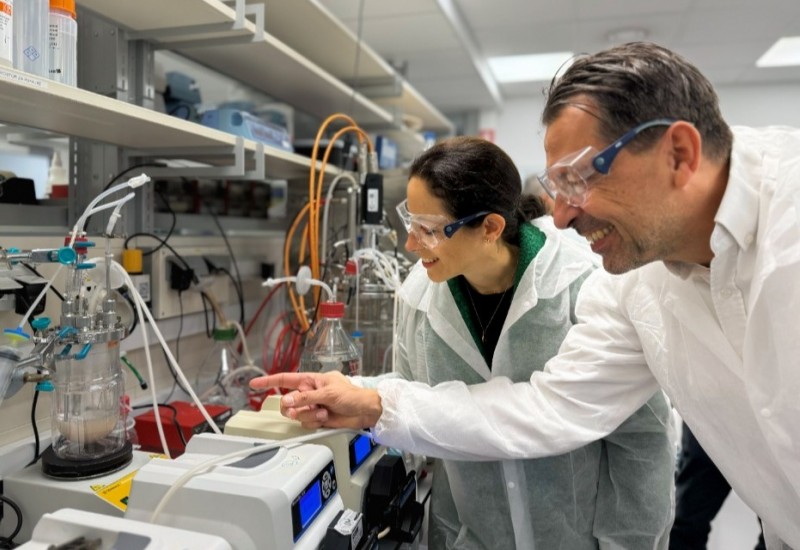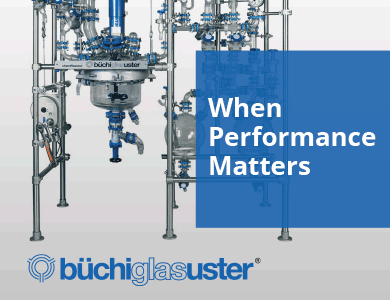Feature article - Digital transformation strategies for speciality chemical production
Tom McEleney, product marketing manager at ASCO and Paul Bristow, global product manager at TopWorx, look at how digital transformation technologies can improve predictive maintenance, reduce operating costs and improve safety and sustainability in speciality chemical plants
Digital transformation is becoming increasingly popular across a wide range of industries, with many organisations recognising the benefits of using smart devices, data analytics and other digital technologies to transform their business operations. These trends are also underway across the chemical industry, from large petrochemical plants to smaller-scale speciality chemical operations, including the production of fine chemicals and chemical intermediates.
In the context of speciality chemicals plant operators can begin to take their first steps on the digital transformation journey with the right combination of fluid control and pneumatic systems. These components and systems ensure the proper movement of oil, gas or chemicals and rely on the reliable actuation of process valves and actuators. Unmeasured parameters or unknown anomalies can compromise these valve systems, resulting in equipment failure and costly, unplanned shutdowns.
In order to protect operations and maintain valuable uptime, knowing the condition of systems and equipment is critical — which is where digital transformation comes into play. Instead of a reactive approach to equipment management, these technologies reveal the real-time health and condition of assets, enabling operators to make informed, proactive decisions that maintain their valve systems and minimise downtime.
In addition to taking a deep dive into the digital transformation phenomenon, this article will explore some practical strategies for deploying digital transformation systems in speciality chemical applications. It will also provide examples of how these digital systems can improve predictive maintenance and throughput, reduce operating costs and improve safety, yields and sustainability.
What is digital transformation?
Digital transformation (DX) pertains to any process that a facility, system or piece of equipment undergoes that allows end-users to see and make decisions based on real-time data, improving the speed and accuracy of decision-making and action. In industrial applications, DX can help operators improve the way they manage their plants, unlocking the following benefits:
* More streamlined operations: DX maximises asset performance and minimises rework
* Quicker response times and higher reliability: The data provided by DX enables fast, real-time responses, allowing operators to quickly adjust to market changes and detect potential issues earlier
* Improved efficiency: DX optimises production processes, reduces waste and increases efficiency, thereby lowering costs and improving productivity
* Greater sustainability: Thanks to DX, operators can lower their energy and resource usage and achieve more sustainable products and processes
* Enhanced safety: DX can improve production safety by providing data on equipment performance, monitoring worker safety and predicting potential safety hazards
Yet despite these advantages, deploying DX, particularly in speciality chemical plants, is not without its challenges. First, these digital technologies require integration with current legacy systems, driving valuable time, money and resources to set up. Second, there may be a lack of useful ways to store and analyse all the current data, leading to data overload. Third, implementing new DX technologies often requires significant change in organisational culture and can be met with resistance from employees who are accustomed to traditional methods.
Even in plants with some digital and sensing devices in place, there are limitations in the current technology infrastructure around actuator accessories, including the solenoid valves, switchboxes and air preparation units. This current infrastructure falls into two categories: the control systems, such as the programmable logic controllers (PLCs) and human-machine interfaces (HMIs), which are responsible for managing machine operation; and, the sensors and other devices that monitor performance at the machine level. Current gaps in this setup include the following key points:
* Data is often not integrated with other plant data systems or made easily accessible to operators and maintenance personnel
* Current systems that monitor safety and proper machine functions are inefficient. There is a need for more advanced systems that can use data to identify potential problems before they occur, unlocking predictive maintenance capabilities
* Often, control systems still rely on operators to manually input commands and make decisions based on data from the different sources
Currently, many speciality chemical plants incorporate a wide range of equipment and systems from different vendors, each with a different communication protocol and interface. This plant-wide interoperability drives up complexity and results in various production inefficiencies and data silos — all of which can impact a plant’s safety, reliability and efficiency
DX technologies & implementation strategies
The good news is that there are ways to effectively implement DX in speciality chemical plants. The first is deploying discrete diagnostic devices to inform operators of equipment performance, material usage and process control. The second involves deploying a full, integrated package to facilitate integration, installation and usage.
In terms of the former, in speciality chemical plants fluid control devices must automate each stage of the process beginning at the sensor level. Sensors and switches collect vital data about process valves, enabling operators to see cycles, temperature, contact status, position and other measurable input in real time.
The sensors are linked to technology that enables connectivity, such as a discrete valve controller, which sends sensor data to the control device, such as the distributed control system (DCS). The DCS analyses, visualises and translates the data into dashboards that operators can easily interpret and synthesise, empowering them to confidently make better, faster decisions.
From the control level, mobility tools provide appropriate personnel with access to preset alerts, information and prescribed actions from multiple platforms. These critical actions spur personnel to repair an asset or replace a component, improving safety and reliability and creating a technology loop that continuously improves efficiency.
When deploying a full, integrated package, some discrete valve controllers, also known as switchboxes, combine the sensing technology with HART communications modules and other components, such as a solenoid valve for piloting. This switchbox sits on top of the valve package. As the position-sensing switch monitors valve position, the HART module captures data from the sensor and sends it to the control system, which analyses it and carries out appropriate actions.
From there, analytics and diagnostic information about valve condition — including position percentage, transition dwell time, device temperature and cycle count — are delivered to personnel via a handheld device or at a control room workstation. These integrated switchbox systems can help plant operators solve several challenges related to uptime and predictive maintenance.
Continuously monitoring performance lets operators improve the visibility of the valve system’s condition, while alerts based on preset parameters shift plant maintenance from being reactive to proactive. Predictive maintenance analytics can improve decisions around device and system replacement, reducing unplanned shutdowns by as much as 36% and lowering scrap, repair and labour costs.
By automating and optimising maintenance, data collection and delivery, DX systems also enhance safety. For example, preset safety alerts reduce the frequency of maintenance rounds, while remote monitoring of valve conditions eliminates the need for workers to be physically close to the assets. Fewer maintenance trips decrease the frequency of possible injury, while improved insights empower personnel to make better safety decisions.
DX in action
Here are a few case examples that demonstrate the power of DX technologies to transform speciality chemical applications, unlocking benefits like greater operational excellence, safety improvements and cost reduction.
In one application, a speciality chemical company was looking to replace a competitive switchbox as part of a DX-driven plant upgrade, requiring information on the position of the valve, air loss pressure (in the form of an alarm) and solenoid failure information. An integrated systems team developed a custom actuator sensor interface (ASI) package, including a pilot valve, switchbox and pressure switches. In this case, the air loss pressure alarm required the pressure switches and ASI bus card to be installed on the valve and switchbox package.
This new package now provides much better insights into potential failure modes, especially since the previous switchbox had lacked air loss information and diagnostics. Pre-packaged, custom systems such as this can free up purchasing, finance, logistics and order management resources, lowering procurement costs by up to 30%.
A second application combined the Rosemount 702 Wireless Discrete Transmitter, TopWorx GO Switch and Plantweb Insight industrial analytics system, providing a cost-effective monitoring system for safety showers and eyewash stations within a speciality chemical facility. This reduced installation costs and time by 85% compared to wired systems, all while improving first responder awareness to safety incidents.
In fact, by alerting personnel and pinpointing the exact location of the safety showers, the company has been able to meet OSHA’s requirement of a four-minute maximum response time for emergency care. As a predictive maintenance measure, this complete system also digitally records field inspection records, something that had previously been a manual process.
A third application involves the deployment of a DX system to support the construction of a new facility that produces biofuels and renewable chemical products from non-recyclable waste. The system included low-power, intrinsically safe (IS) devices compatible with IS CHARMs modules, which provides I/O type connectivity in a single-channel component, allowing field wiring of any signal type to be terminated anywhere.
This system, which included a low-power solenoid valve, switchbox and DeltaV CHARMs electronic marshalling, enabled the company to implement cost-saving, non-incendive Division 2 wiring practices. This is because in hazardous locations, traditional wiring methods can be complex and expensive, requiring the use of explosion-proof enclosures and conduits.
IS CHARMs modules provide intrinsically safe power and signal distribution to the devices, in this case, the electrically compatible solenoid valve and switchbox, thus eliminating the need for traditional, hazardous wiring methods. DeltaV CHARMs can provide estimate cost and labour savings of up to 60% compared to traditional I/O installation. This system also met the company’s safety and low-power needs, creating a more sustainable chemical process.
Contact:
Jimmy McNamara
Emerson
www.emerson.com















